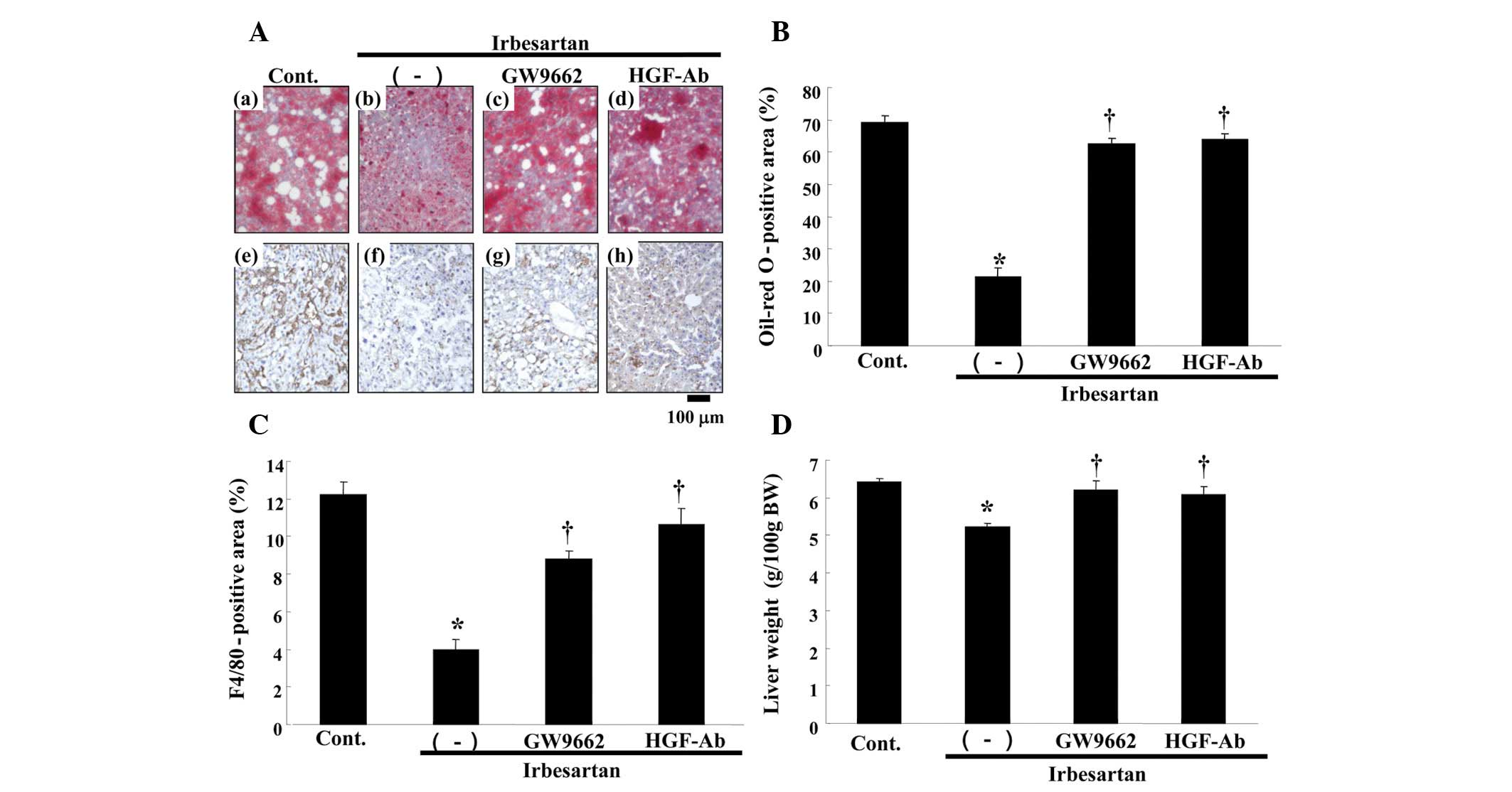Improvement of metabolic syndrome by irbesartan via the PPARγ/HGF pathway in apolipoprotein E knockout mice
- Authors:
- Published online on: October 25, 2012 https://doi.org/10.3892/br.2012.28
- Pages: 65-70
Metrics:
Total
Views: 0 (Spandidos Publications: | PMC Statistics:
)
Total PDF Downloads: 0 (Spandidos Publications: | PMC Statistics:
)
Abstract
Irbesartan, a partial agonist of peroxisome proliferators activated receptor-γ (PPARγ), has been reported to improve insulin resistance and lipid profile in patients with diabetes mellitus or metabolic syndrome (MS). However, the down effectors of PPARγ have yet to be elucidated. Thus, in this study, we focused on the role of the hepatocyte growth factor (HGF) in the anti-metabolic effects of irbesartan, using apolipoprotein E (ApoE) knockout (KO) mice. ApoE KO mice placed on a high-fat diet (HFD) for 12 weeks were divided into four groups: i) the control (HFD only), ii) the HFD + irbesartan (5 mg/kg/day), iii) the HFD + irbesartan + GW9662, a PPARγ antagonist (0.5 mg/kg/day) and iv) the HFD + irbesartan + anti-HGF neutralizing antibody (200 µg/week). The liver and epididymal adipose tissues were evaluated histologically. Serum adiponectin and HGF levels were also measured by ELISA. Fatty liver (as detected by oil-red O staining) and macrophage infiltration were markedly reduced by irbesartan. Irbesartan treatment also reduced macrophage infiltration into epididymal adipose tissue and hypertrophy of adipocytes. However, these effects of irbesartan were attenuated by GW9662 as well as by anti-HGF neutralizing antibody. Serum and hepatic HGF levels were also markedly increased by irbesartan, whereas GW9662 decreased the HGF level. In conclusion, irbesartan, an angiotensin (Ang) receptor blocker (ARB) and partial agonist of PPARγ (metabosartan), demonstrated a reduction in fatty liver and chronic inflammation, such as macrophage infiltration, beyond its blood pressure-lowering effect. These favorable characteristics of irbesartan might be due to local HGF activation through its partial PPARγ agonistic action, in addition to Ang II blockade. Upregulation of local HGF by irbesartan might provide a novel advantage in a strategy for the prevention and treatment of cardiovascular diseases (CVDs).
















